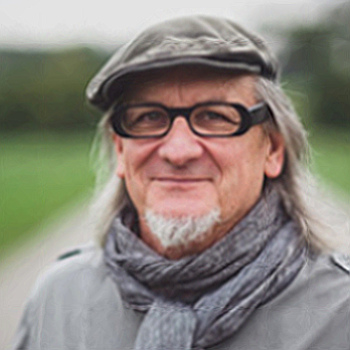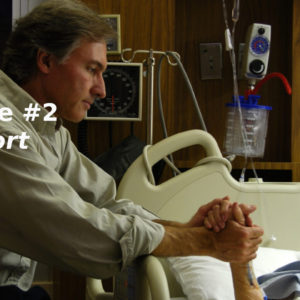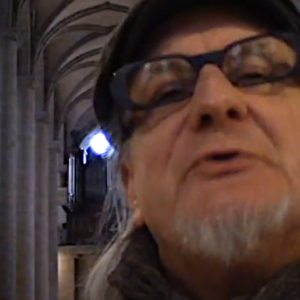Growing-up in church I heard an occasional sermon on prayer and it basically was centered on well known scriptures like:
- “Ask and you shall receive”
- “Give us this day our daily bread”
- “What man is there of you, whom if his son ask for bread, will he give him a stone?”
Prayer was essentially asking God for things and it was obviously very biblical. If my prayers were not answered, I was told that I needed to pray more and to pray more faithfully and fervently. So I went through several versions of doing just that; but each time I doubled down on this kind of praying, something told me there was something more.
Eventually, after lots of time to reflect on and experiment with praying, I realized that there IS another side to prayer that I never heard much about. I now look at prayer as having two major dimensions: Prayers of asking, yes, but also prayers of presence.
There are similarly many scriptural passages that call our attention to the prayer of presence, such as:
- “Abide in me and I in you,”
- “Pray without ceasing,” and
- “I meditate on you in the night watches.”
Another of my favorites is Rev 3:20, which draws the beautiful image of us opening the door to God and him coming in to have dinner with us. What illustrates presence better than having a wonderful meal together?
So instead of beginning my times of prayer with a “grocery list” of needs and wants, I now focus much more on praise, thanksgiving and other kinds of prayers that cultivate these soul-touching moments with God. In these forms of prayer, I’m not really asking for anything except his presence. There are several other forms of prayer that fall into this category of prayers of presence: confession, lamentation, contemplation as well as observation of nature.
Besides expanding the kinds of prayer you include in your meditative moments with God, feel free to experiment with what you do with these prayers. Open your eyes, pray out loud, use body language, write, sing, sketch, paint, walk, dance and anything else that helps you in the moment.
ENTERING INTO PRESENCE
This is a very subjective matter. It’s different for everyone, but there are some commonalities that can help get us started:
- Create a time and place of calm, free of distraction and activity.
- Cultivate the moment by slowly passing through moments of praise, gratitude, confession, etc. Allow your prayer to expand to whatever above activities are appropriate.
- Allow these active prayers to eventually flow into moments of silence. Here, it is possible to take advantage of inspiring texts alternating between them and silent reflection and openness. Also, beautiful music or inspiring scenery can also lead to moments of stillness and awe.
- Take advantage of sensorial signals such as lit-candles, a special chair, a body position or gesture. Your spiritual memory recalls when and how and where you have experienced past moments of deep presence, so take advantage of its help. Many find a simple verbal phrase, mantra or melody helpful to prolong the moment.
- Let this moment be what it is. Sometimes it can be profound, other times almost nothing. My favorite image for this is lovers on a park bench. The lovers don’t plan out what to do or have a written agenda, it is almost always spontaneous. One day they arrive with heavy hearts and there’s little talking, just a head upon a shoulder in silence. Whereas, other days, joyous words and laughter abound.
- Whatever this moment looks like for you, what is most important is that entering into presence takes practice. It is much like exercising a muscle or learning a musical instrument. It takes time, effort, patience and repetition, but the rewards are very much worth it. It will literally change your life.
ADVANTAGES OF PRESENCE
This has obviously changes the way I pray, but it has also changed the way I think about my relationship with God. For instance:
- If you ask me if I believe in God, my response would not just be I “believe” in him, but I would say I “know” he exists because I often feel his presence.
- I’ve come to realize that his presence is quite often the answer to my prayer when I ask for things. If I ask for wisdom, he responds by saying, “I AM wisdom.” If I ask him to calm my anxiousness, he say, “I AM peace.” He doesn’t just give us an injection of wisdom or peace; he continually invites us into his presence and there, we have those things.
- When we focus on cultivating his presence, we are not fretting over our past scars and failures, nor our fears and worries of the future. These things can overwhelm our emotions and cripple our lives. In these brief moments of presence, we are deeply known and loved; we feel forgiven and healed; we are inspired and motivated.
A few years ago I heard a BBC interview with William Young, author of The Shack. He related a dream, where he woke up in the middle of the night as if he were in an amazing waterfall of creative ideas. After about an hour of great ideas washing over him, he had the thought that he should get up and write this stuff down…then the ideas stopped.
The take-away for us in this story is that we are conditioned to see inspiring moments as unique events where we need to grab as much from them as we can, a zero-sum gain universe. Alternatively, we should see them as moments where we can learn, with some practice, to return to them often. We CAN discover the path through the jungle of our lives back to the refreshing waterfall and come as often as we would like. We CAN discover how to return to the presence of God throughout the day, to bathe in the waterfall of the I AM: the waterfall of his peace, his joy, his love, his mercy, patience, goodness, justice, kindness, wisdom, wholeness, beauty, faithfulness, healing, gentleness, self-control, calmness…

For nearly a decade David Brazzeal made his home in SW France where he enjoyed warm baguettes from the boulangerie and fresh cheese from the marché. Since 1986 alongside his wife Sanan, David worked with the International Mission Board in Brazil, Guadeloupe, Québec and France, playing a leading role in five innovative new churches. Whether writing poetry, creating guerrilla labyrinths, or electro-meditative music, his work is inspired by the synergy that exists between the spiritual and the creative. He loves nudging those who are creative toward deeper spirituality and those who are spiritual toward heightened creativity.



